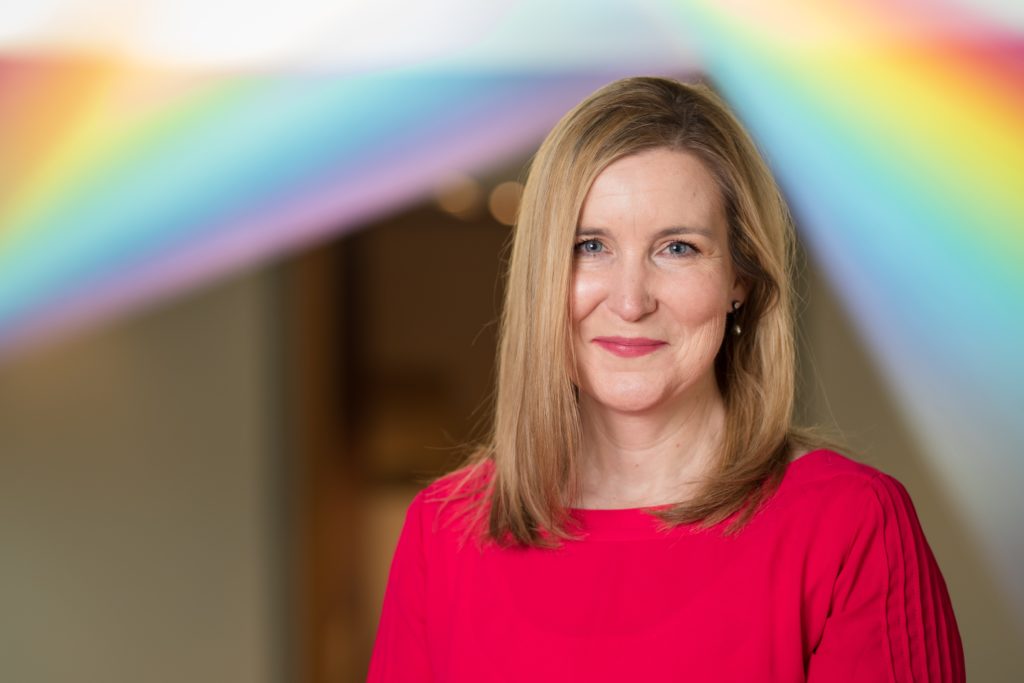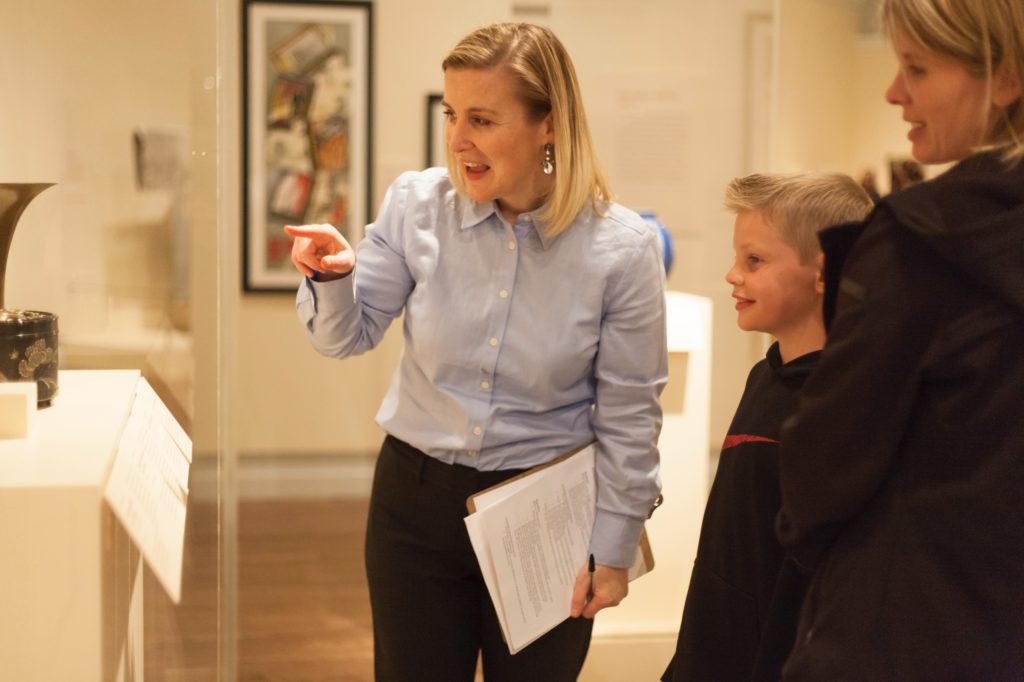
Janalee Emmer became the first female director of BYU’s Museum of Art on April 26.
Emmer hopes to showcase new voices and artists that aren’t normally seen in the museum world while continuing the “rich and wonderful traditions” the Museum of Art already has.
Emmer is the fourth director of the Museum of Art, the first female director and the first single director.
“I am really pleased to be the first woman to take this role. I hope it gives young girls, young women and BYU students a signal that there are so many possibilities for them in the future,” Emmer said.
Everyone’s life path is different, she said. But that doesn’t mean it’s less meaningful or valid. “I really feel that often God sees in us something we might not even see in ourselves and He opens up possibilities that we can’t see.”
The Museum of Art staff has a majority of women, especially in leadership roles. Museum assistant director Teresa Taylor thinks it is great so many leadership roles are going to women.
“We are poking at the glass ceiling pretty hard,” she said. She thinks the museum staff shows “women can come from different backgrounds and experiences to bring their values and add to wherever they are working with their leadership capabilities.”
Emmer never expected to become museum director. She has always loved art and museums, but originally thought she would do medical school. But during her time as an undergraduate at BYU, she realized she loved humanities more. She graduated as a humanities major and art history minor.
While completing a master’s program at BYU, Emmer worked at the Springville Museum of Art. She said working at that museum gave her a taste of everything: hanging art, curating, intake, writing and programming. She loved the experience and knew she wanted to go the full distance in museums.
She earned her doctorate degree at Penn State University focusing on 19th century and French women artists. She completed a doctoral fellowship working at The Getty Museum in Los Angeles, giving her a new experience of working in a large museum with a big budget. She then worked as an art history professor at the University of Tennessee and Ohio Wesleyan University.
In 2014, BYU’s Museum of Art director Mark Magleby reached out to Emmer for her to be involved in the educational department and curation. This was the beginning of Emmer coming back “full-time to the museum world.”
Emmer was one of Magleby’s students when he first started teaching at BYU. He said Emmer has “got it across the board. She has depth and breadth to her scholarship.”
Emmer has worked at the Museum of Art since then and said “it’s just a wonderful place to be.” She said it is always exciting working on new exhibitions and acquisitions, engaging with people and giving tours.
“I think it’s the best combination of the things I love which is getting people excited about art and actually working with art objects, artists and exhibitions,” she said.
Magleby said Emmer was “fully ready” to step into the head role of director due to her extensive experience in museums and abroad in various countries.
Taylor said that although this change was unexpected, she thinks “there are great things ahead for the museum and many opportunities opening.” She said Emmer has a great mix of leadership skills and a “vision” of art education.

As director, Emmer will now be focused on the “bigger picture” aspects of the museum such as management, oversight, ensuring all departments are running smoothly and, on a larger scale, looking at what is best for the future of the museum.
“It’s such an impressive institution and collection, so I am honored to be here and contribute in that way,” she said. “The future is bright at the museum.”
Emmer feels strongly about expanding the representation of artists that are showcased in the museum. She hopes to bring artwork in from artists who haven’t received as much attention such as women artists, African American artists, Latin American artists, Native American artists and more.
“We want to make the museum a place that everyone feels comfortable. A space for all and that they can see themselves represented as they go through both our collections and the exhibitions,” Emmer said.
Magleby said Emmer has helped the museum gain a “fervor for building a collection that includes better and more women artists.” He said the museum is trying to “get in early” with up and coming contemporary artists who will continue to be important in the art world.
“We will always be true to our collection and how it stands now,” Emmer said, keeping religious art, faith inspiring exhibitions and American art at the forefront of the museum. “Those things won’t change, but I hope that as we move into the coming years, we will have a broader picture with artwork we haven’t seen before and acquisitions that will round out our collection.”
Emmer’s shift to director will cause various other staffing changes. Magleby, the former director, is now the emeritus director and development chair of the museum. Additional staff will fill the curatorial and education roles that Emmer left behind.
As emeritus director and development chair, Magleby will focus more on working with donors, getting grants for the museum, connecting the museum with LDS Philanthropies and returning to a curatorial role for an upcoming contemporary artist exhibition.
Because of the pandemic, the museum had to learn new ways of outreach and virtual technology. Emmer said while they want to keep some of the new virtual things they have started, she is also “very excited” for things to be fully in-person again to include events such as Art After Dark.
“Being in the field I am, I believe deeply in the power of arts,” Emmer said. “I think they’re so important and meaningful in our lives and I’m honored to have this stewardship over the museum for the next chapter.”




